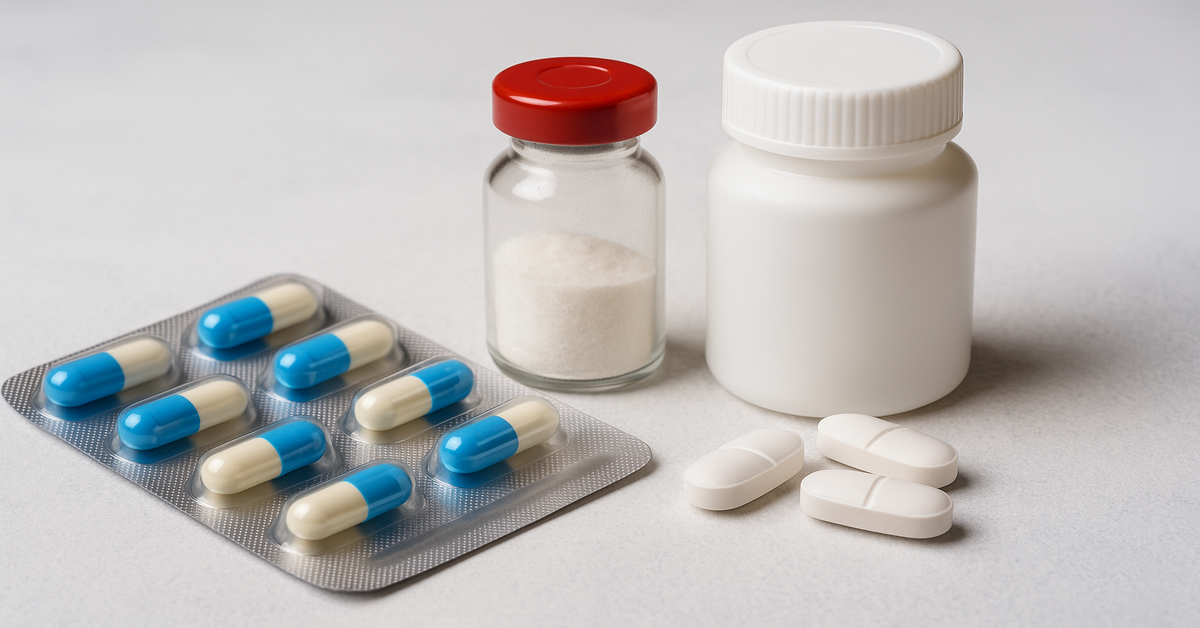
Antibiotics have shaped the history of medicine in unimaginable ways. Before their discovery, even minor infections could turn fatal, surgeries carried a high risk of death, and pandemics often wiped out large populations. Among the first and most influential antibiotics to revolutionize healthcare was penicillin. Derived from fungi of the Penicillium genus, penicillin gave rise to an entire class of drugs that remain widely used today.
When combined with “strepto,” often a reference to streptococcal infections caused by the bacterial genus Streptococcus, the term “Strepto Penicillin” essentially points to the critical role of penicillin in treating infections caused by streptococci. These include conditions such as strep throat, scarlet fever, pneumonia, meningitis, and many soft tissue infections.
This article provides a comprehensive exploration of Strepto Penicillin, covering its origin, pharmacological mechanism, clinical uses, dosage forms, side effects, limitations due to bacterial resistance, and the future of its medical role.
The Origin of Penicillin
The history of penicillin dates back to 1928, when Alexander Fleming noticed that colonies of Staphylococcus aureus were being destroyed by a mold (Penicillium notatum) contaminating his petri dishes. This discovery marked the birth of the antibiotic era. Although Fleming identified the potential of penicillin, it took years of research and development—especially during World War II—for mass production to become possible. Scientists like Howard Florey and Ernst Boris Chain played vital roles in purifying and producing penicillin for clinical use.
Penicillin quickly became the first widely available antibiotic, saving millions of lives from infections that had previously been untreatable. Its role against streptococcal infections was particularly transformative because these bacteria were common causes of life-threatening illnesses like rheumatic fever and bacterial endocarditis.
Understanding Streptococcus Bacteria
To understand Strepto Penicillin, it is important to understand its target: the Streptococcus bacteria.
Classification of Streptococcus
Streptococci are Gram-positive cocci bacteria arranged in chains or pairs. They are categorized into groups based on Lancefield classification and their ability to hemolyze red blood cells on blood agar.
| Type of Streptococcus | Classification | Key Infections |
|---|---|---|
| Group A (Streptococcus pyogenes) | Beta-hemolytic | Strep throat, scarlet fever, cellulitis, necrotizing fasciitis |
| Group B (Streptococcus agalactiae) | Beta-hemolytic | Neonatal sepsis, meningitis, pneumonia |
| Streptococcus pneumoniae | Alpha-hemolytic | Pneumonia, meningitis, otitis media, sinusitis |
| Viridans streptococci | Alpha-hemolytic | Endocarditis, dental infections |
Why Penicillin Works Well Against Streptococcus
Streptococcal bacteria generally lack resistance mechanisms that protect them from penicillin (though resistance is slowly emerging in some strains). This makes penicillin and its derivatives the first line of treatment for many streptococcal diseases.
Mechanism of Action of Strepto Penicillin
Penicillin belongs to the β-lactam family of antibiotics. Its effectiveness lies in interfering with bacterial cell wall synthesis.
- Bacterial Cell Wall Structure
- Bacteria like Streptococcus have a rigid cell wall made primarily of peptidoglycan.
- This cell wall provides structural integrity and protection.
- Action of Penicillin
- Penicillin binds to penicillin-binding proteins (PBPs)—enzymes involved in the cross-linking of peptidoglycan chains.
- Once bound, penicillin inhibits transpeptidation, halting proper cell wall synthesis.
- As a result, bacteria become structurally weak and eventually lyse under osmotic pressure.
- Why Humans Are Not Affected
- Human cells lack peptidoglycan walls. This selective targeting makes penicillin safe for human use at therapeutic doses.
Clinical Uses of Strepto Penicillin
The term Strepto Penicillin largely reflects its application in treating streptococcal infections. However, penicillin also covers other Gram-positive bacteria and some Gram-negative organisms.
1. Treatment of Strep Throat
- Causative Agent: Group A Streptococcus (Streptococcus pyogenes).
- Drug of Choice: Penicillin V (oral) or Penicillin G (intramuscular injection).
- Duration: Typically 10 days of oral therapy.
- Importance: Prevents complications like rheumatic fever and glomerulonephritis.
2. Scarlet Fever
- Caused by toxin-producing strains of Streptococcus pyogenes.
- Characterized by sore throat, rash, and “strawberry tongue.”
- Penicillin eliminates the bacteria and prevents long-term complications.
3. Pneumococcal Infections
- Streptococcus pneumoniae causes pneumonia, meningitis, and middle ear infections.
- Penicillin G or amoxicillin are widely used unless resistant strains are suspected.
4. Rheumatic Fever and Prophylaxis
- Penicillin is critical not just for treatment but also for prevention.
- Patients with recurrent rheumatic fever receive long-term penicillin prophylaxis to avoid heart damage.
5. Syphilis (Treponema pallidum)
- Although not caused by streptococci, syphilis is another major infection effectively treated with penicillin, showing its broad relevance.
Dosage and Forms of Strepto Penicillin
Penicillin is available in multiple forms tailored for different clinical scenarios.
| Form | Example | Route | Typical Use |
|---|---|---|---|
| Penicillin V (Phenoxymethylpenicillin) | Penicillin V potassium | Oral | Strep throat, mild infections |
| Penicillin G (Benzylpenicillin) | Crystalline Penicillin G | Intravenous or Intramuscular | Severe infections, meningitis, syphilis |
| Long-acting forms | Benzathine penicillin G, Procaine penicillin G | Intramuscular | Rheumatic fever prophylaxis, syphilis |
| Amoxicillin (semi-synthetic) | Amoxicillin capsules/suspension | Oral | Broader spectrum, otitis media, sinusitis |
Dosages vary depending on infection severity, age, and weight of the patient.
Advantages of Strepto Penicillin
- Highly Effective Against Streptococci – Remains the gold standard treatment.
- Selective Toxicity – Minimal harm to human cells.
- Proven Safety Record – Decades of clinical use with well-established safety.
- Affordable and Accessible – Widely available globally.
- Prevents Complications – Not only treats infections but also prevents severe sequelae.
Side Effects and Limitations
Like all drugs, Strepto Penicillin carries potential risks.
Common Side Effects
- Nausea, vomiting, diarrhea
- Mild skin rash
- Local irritation at injection site
Serious Side Effects
- Allergic Reactions: Ranging from mild rash to life-threatening anaphylaxis.
- Neurotoxicity: High doses may cause seizures in susceptible patients.
- Hematologic Effects: Rare but possible hemolytic anemia or thrombocytopenia.
Limitations
- Bacterial Resistance: Some strains of Streptococcus pneumoniae and other organisms show resistance to penicillin.
- Not Broad-Spectrum Enough: Ineffective against many Gram-negative bacteria.
- Allergy Concerns: 10% of people report penicillin allergy (though true allergy is often less common).
Resistance in Streptococcal Infections
One of the greatest challenges in modern medicine is antibiotic resistance. While most Group A streptococci remain penicillin-sensitive, resistance in Streptococcus pneumoniae is growing.
| Mechanism of Resistance | Explanation |
|---|---|
| Altered PBPs | Bacteria modify target sites, reducing penicillin binding. |
| β-lactamase Production | Enzymes break down penicillin (though rare in streptococci). |
| Biofilm Formation | Protects bacteria from antibiotic penetration. |
Resistance necessitates higher doses or alternative antibiotics such as cephalosporins, macrolides, or fluoroquinolones.
Preventive Role of Strepto Penicillin
Beyond treatment, Strepto Penicillin plays a preventive role in medicine.
- Post-exposure prophylaxis for rheumatic fever.
- Pre-surgical use in certain high-risk surgeries involving the throat or heart.
- Maternal prophylaxis for Group B streptococcal infection in newborns.
Comparison with Other Antibiotics
| Feature | Strepto Penicillin | Cephalosporins | Macrolides | Fluoroquinolones |
|---|---|---|---|---|
| Spectrum | Narrow (mostly Gram+ cocci) | Broader | Effective in penicillin-allergic patients | Very broad, includes Gram- |
| Safety | Very safe | Safe | Safe but some GI upset | More toxicity risks |
| Resistance | Low in Group A strep | Moderate | Increasing resistance | Growing concern |
| Cost | Low | Moderate | Moderate | High |
Future of Strepto Penicillin
Despite newer antibiotics, penicillin remains indispensable. Current research focuses on:
- Combining penicillin with β-lactamase inhibitors to overcome resistance.
- Developing modified semi-synthetic penicillins with broader spectrum.
- Genomic studies to track resistance patterns.
- Vaccines to reduce dependency on antibiotics.
Conclusion
Strepto Penicillin continues to be one of the most reliable and effective treatments against streptococcal infections. Its discovery revolutionized medicine, and its utility endures despite challenges posed by resistance and allergies. While newer antibiotics exist, none match the combination of effectiveness, affordability, and safety that penicillin offers for streptococcal infections.
Healthcare providers must use Strepto Penicillin judiciously, balancing its benefits with careful monitoring for allergies and awareness of local resistance trends. With ongoing research and responsible use, Strepto Penicillin will continue to save lives for generations.
FAQs
1. What is Strepto Penicillin used for?
Strepto Penicillin is primarily used to treat infections caused by Streptococcus bacteria, including strep throat, scarlet fever, pneumonia, and rheumatic fever prevention.
2. Can Strepto Penicillin cure all bacterial infections?
No, Strepto Penicillin is most effective against Gram-positive bacteria like streptococci. It does not work well against many Gram-negative bacteria.
3. What are the common side effects of Strepto Penicillin?
Common side effects include nausea, diarrhea, mild rash, and local injection site irritation. Severe allergic reactions are rare but possible.
4. Is Strepto Penicillin safe for children and pregnant women?
Yes, penicillin is generally safe for children and pregnant women, but dosage must be adjusted under medical supervision.
5. What should I do if I am allergic to Strepto Penicillin?
If allergic, doctors prescribe alternatives like cephalosporins (if cross-reactivity risk is low) or macrolides such as azithromycin.






